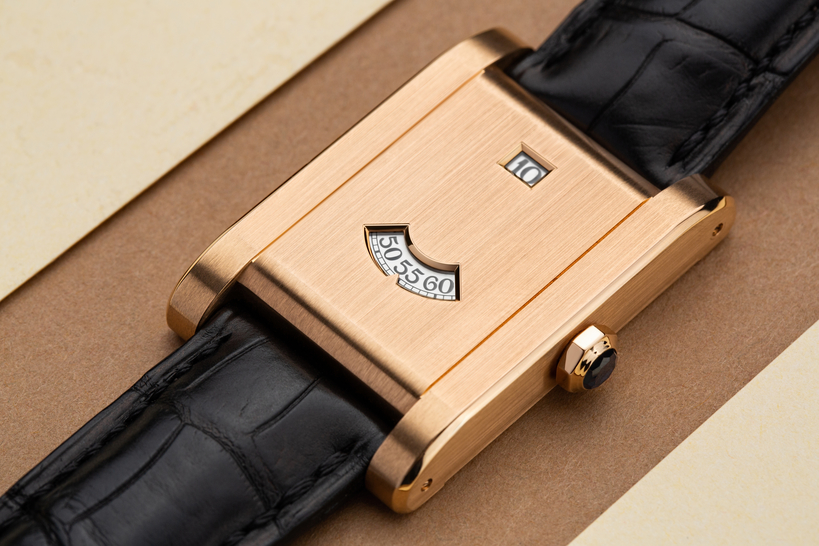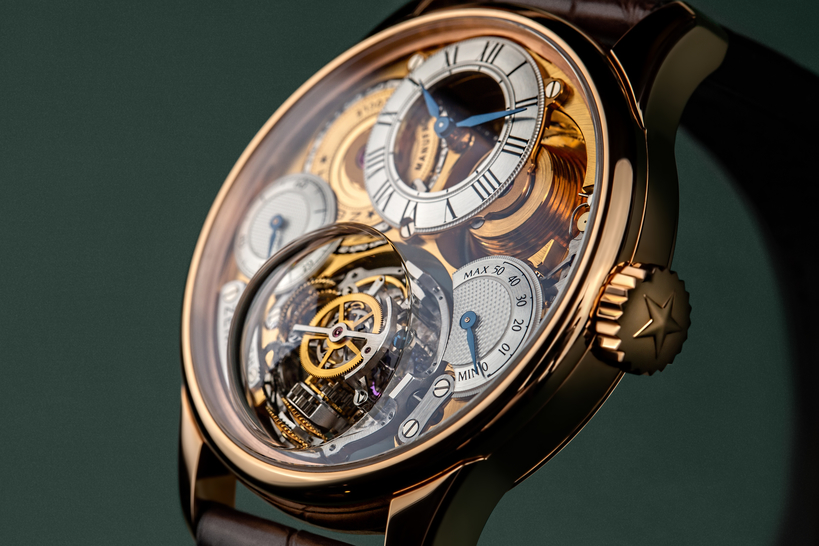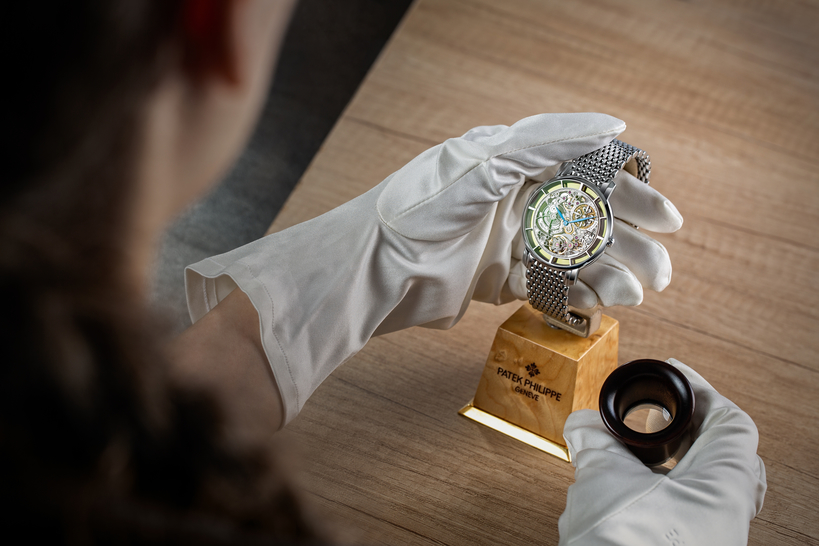Origins in Saudi Arabia.
Out of the big three auction houses, at least we can see some activity from Sotheby's. On February 8, the British-founded auction house held an interesting miscellaneous auction called Origins, featuring statues, paintings, luxury handbags, and sports memorabilia, sold alongside pieces of jewelry and watches.
The event took place in the historic premises of Diriyah — the first capital of the Saudi Dynasty and home of the At-Turaif UNESCO World Heritage Site. The sales were preceded by a week-long public exhibition of the most attractive lots. Sotheby's means business in Saudi Arabia: they're there to stay after official incorporation with plans to open an office in the Riyadh landmark Al Faisaliah Tower.
The most expensive watch lot in the catalog was expected to be a prototype of quite a famous, extremely light, and super durable tourbillon: Richard Mille's RM-038 "Yohan Blake", dedicated to the famous Jamaican sprinter. Mille made the model ahead of the London 2012 Summer Olympics.
Besides its beautiful movement, the watch also has a miracle case made of WE54: an alloy which is 89% magnesium and 6% yttrium. By the way, Blake wore this watch whilst winning gold — only in the 4x100 meter relay race — he came second in the 100 meter sprint, but still.
The organizers estimated that the unique watch would raise USD 1,000,000 - 1,500,000. But bidders in Saudi Arabia didn't appreciate this model, so the watch didn't find a new owner. Oh well, not to worry, they'll take this model to the United States, where it'll be eagerly snapped up.
The most expensive watch at the Origins sales ended up being a vintage steel chronograph on a steel bracelet: the Rolex Daytona "Paul Newman Musketeer" Ref. 6264 with a "Certificacion de Valor" from 1973.
It's considered to be a transitional model from the Ref. 6241 to later models, which makes it fairly rare (less than 2000 pieces are believed to have been made). But it's "Musketeer" dial with a tri-color scheme makes it even more unique: the black-and-white "reverse panda" configuration with a red seconds track.
This piece came all the way from Argentina, where it was sold in 1973 for the equivalent of USD 435 according to its accompanying documents. The organizers gave this lot an estimate of USD 160,000 - 320,000. It sold right in the middle of this price range: USD 240,000.
The second most expensive watch at the sales is a hot favorite across auction platforms: Cartier London's Crash. Estimated to go for USD 130,000 - 260,000 this watch sold for USD 228,000. Maison Cartier has a reputation as "the jeweler of kings and the king of jewelers," in the words of King Edward VII, and the brand proved to be much more popular than Richard Mille in the Kingdom of Saudi Arabia.
Another lot that has to be mentioned is Patek Philippe's Ref. 5070P-001 chronograph. It's one of this great watchmaker's famous modern models. As a quick reminder, Patek Philippe discontinued the iconic Ref. 1463 chronograph in the 1960s, and their product line had no watches in the simple chronograph category for a long time.
The Stern family who own Patek Philippe only launched Ref. 5070 based on the hand-wound Lemania 2310 caliber in 1998 after receiving numerous requests from clients. And it has to be said that the public welcomed the model with delight. A big, recognizable chronograph by Patek Philippe!
What more do you need?! With a case that measured 42 mm in diameter, Ref. 5070 was Patek Philippe's largest wristwatch since 1950 upon release. The model was so sought-after that the watchmaker even had to mark its 10th anniversary. And they marked it in 2008 with this platinum version.
Availability of the model was limited for all intents and purposes: only around 250 pieces were made. And the model itself was produced between 2008 and 2009. Its new leaner successor at 39 mm in diameter had already arrived by 2010: Ref. 5170 chronograph based on the manufacture CH 29-535 PS movement protected by six patents.
It'd be a stretch to say that the platinum Ref. 5070P-001 is a major rarity, but collectors keep quite a close eye on its performance at the auctions. In the end, this chronograph with a navy blue dial was given an estimate of USD 150,000 - 200,000 and sold for USD 162,000. Audemars Piguet's Royal Oak "Joaillerie" Ref. 15452BC.ZZ.1258BC.01 from 2018 also appears to have gone down really well with participants in Saudi Arabia.
So why was it such a big deal? It's a fully white-gold version, completely covered with brilliant- and baguette-cut diamonds — a true Royal Oak! So, what if it's a simple time-only three-hand watch? The model sold for close to its upper estimate at USD 132,000, which is 25% higher than the original retail price.
In contrast, the Rolex Day-Date II "Royal Khanjar" Ref. 218206 was a letdown. The piece commissioned by the Sultan of Oman in 2012 had calendar indications in Arabic, a platinum case, and big diamond-set Roman numerals for hour markers. It sold close to its lower estimate at USD 66,000. That's below the retail price! The Middle East appears to be a tricky market.
Could it be that relations between the Saudis and the Sultanate of Oman weren't as warm at the time of the sale as the auction's organizers would have liked? We can only speculate. But one of the most interesting events at Origins was the first appearance of the Rolex Oyster Perpetual Ref. 124300 "Celebration Dial" model on the pre-owned watch market since it wooed everyone two years ago at the Watch & Wonders trade show in Geneva.
And the surprise clearly worked. This model was far from the most interesting steel edition in this series, yet the present piece with an estimate of USD 10,000 - 15,000 sold for USD 24,000. Wait until some way more interesting "Bubbles" resurface — watches that Rolex enlisted master enamel painters to decorate!
Another curious incident worth mentioning from the first serious auctions of the year is that no one bought the titanium DeWitt Academia Antipode Tourbillon GMT Minute Repeater or the Bell & Ross Chronograph Tourbillon in a completely transparent case made of sapphire crystal.
And they weren't asking for much either: the DeWitt had an estimate of USD 80,000 - 160,000, and the estimate for the piece by Bell & Ross was USD 50,000 - 100,000. Their cases made of scarcely presentable titanium and synthetic sapphire clearly made zero impression on Saudi clients.
Sotheby's is also planning another small auction during the Watch & Wonders trade show in Geneva, tantalizingly named "AREA_51". They've amassed 50 watches for the sale, which either look like UFOs or are UFO-themed.
The lots generating the most interest are Audemars Piguet's Royal Oak Concept CW1 (estimate: CHF 100,000 – 200,000), Patek Philippe's ladies' bracelet watches that ended up in this sale for some unknown reason — the Asprey Ref. 4117/1G (estimate: CHF 50,000 – 100,000) and Ref. 4233/1 (estimate: CHF 20,000 – 40,000) — plus another ladies' bracelet watch by Rolex called Starship Gold (estimate: CHF 8000 – 12,000).
Credits provided by: www.sothebys.com
















